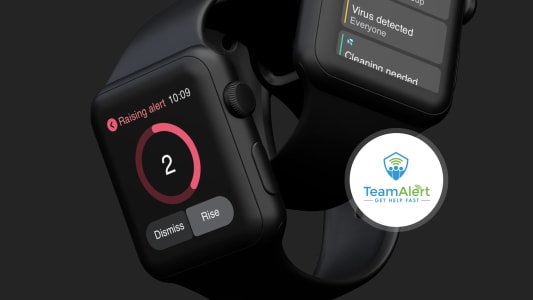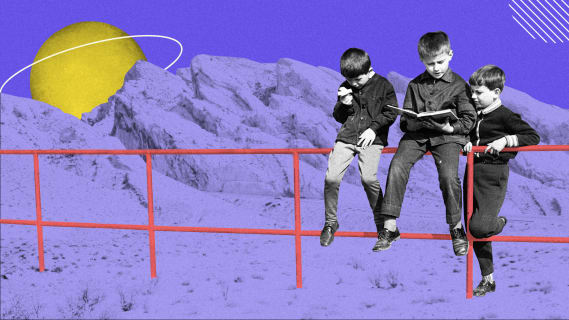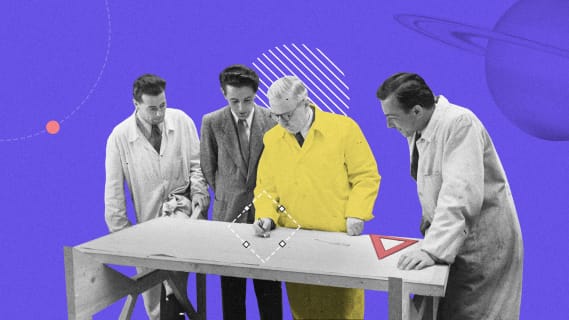The what & why of gamification in UX design
Apps, websites and other digital products tend to be more popular with users when they’re engaging. Gamification in UX design engages users with a product by tapping into their sense of fun and competition. Read on for a definition of gamification, how it can benefit your product, and a list of the most common gamified elements in UX design.

Table of contents
What is gamification?
Gamification is about using game mechanics and interactive features in non-game environments. For example, offering users the chance to score points as part of your app; or offering rewards to people who return to your website.
Psychologically speaking, people are motivated by goals or challenges. Gamification often involves setting up such objectives and then rewarding users as they progress towards achievement. Those rewards don’t have to be tangible – scoring points within an app, being awarded a badge or status for completing a task, or simply unlocking a brief animation can still be rewarding for users.
Increasingly, gamification is an influential factor in UX design. Clearly, anything that makes a digital product more engaging adding to the user experience in a positive way. Unsurprisingly, gamification in UX design has been a growing trend for some years now and that shows no sign of changing. Let’s look at why…
The potential benefits of gamification in UX
What exactly does gamification mean in terms of your digital product’s performance? In UX design has a number of clear performance benefits:
- User engagement - Gamification is used to stimulate action by the user – whether it’s to complete a process, share a link, submit additional information, or check out a new feature, game mechanics can be used to increase the engagement of existing users and attract new ones. That means more activity on your app or website, less churn, and more completed processes (forms filled, conversions made, purchases completed, etc.) Gamification can help turn people into regular users who will come back again and again.
- Motivation – Ever stayed up till 2am playing a favorite game? Even on a ‘school night’? We all have, and that’s the power of games. We want to see what comes next, beat one more level, win one more medal. Gamification injects some of that same motivation into your UX design, making your app harder to put down.
- Completion – Humans are competitive animals. When we feel our performance or actions are being compared to someone or something else, we’re more likely to work (play!) harder or longer. Whether we are competing against friends, strangers, our own past performance, or just the challenges in a game, competition keeps us involved and trying – determined to complete the task in front of us. The key is to have a standard to measure ourselves against.
Applying gamification in UX design
Gamification is the application of human psychology to UX design, using people’s desire to win, excel, and complete the task in front of them. But what underlying drivers or other elements of UX design count as gamification?
Competition
A sense of competition is a great motivator to continue with a task. That competition might be with other app users. If the UX design gives all users a ranking based on their app usage, individuals can compare themselves against others and be motivated to use the app more just to improve their position.
Alternatively, people can compete against themselves, striving to beat their previous performance in a task. Any element that includes a comparison and the possibility of improvement can work.
How can you create competition for users? Simple. Add a leaderboard. Everybody gets a kick out of being #1.
A clear journey
Just like the sequence of levels on a classic videogame, you can gamify your app by giving users a sense of progression. One stage leads to the next. It’s a clear indication of achievement and progress. For example, if your app has a tuition option to help people learn how to use it, you can put the ‘lessons’ in order, introducing the features one at a time.
Or maybe it’s a sign-up and registration process. Either way, you create a journey and at the end of that journey is the goal. Users know that there are stages to the journey and they can track their progress; maybe even compare their progress to other users. With a journey you can motivate users to complete tasks or simply encourage them to continue using it.
Rewards
How often do you promise yourself a treat as a reward for finishing something? It might be a donut after you’ve washed the car, or just a cup of coffee and 10 minutes with a book once the laundry is done… whatever it is, you’re gamifying your life by introducing a reward. Doing the same with your app design – e.g. complete a form and earn a 10% discount – is a solid way to engage users.
Going social
People like to tell others about their achievements. Whether that’s sharing or showing off, there’s no doubt that adding the facility to share badges or medals on social media is appreciated (and used) by many. It’s also free advertising for your app or website.
Limitations
All games have rules – without some kind of constraint or limitation, players have nothing to strive against, nothing to ‘beat’. Time limits, countdowns, deadlines… they all add pressure. Of course, you don’t want to put people off by making your app or website too restrictive. You don’t want people to feel they can’t ‘win’ but for winning to feel like an achievement, a little pressure is good design.
Points and badges - an example of reward system
We’ve talked about competition and journeys and rewards, but how can you show users that they’re progressing? Adding a points system is a simple way to do this. Points can be awarded for completing tasks, submitting information, meeting deadlines… anything, really.
Badges, medals, stickers
When users achieve a certain number of points, or complete a specific task, why not award them a badge or a medal of some sort? Being able to add that award to their user profile (or share it on social media) gives the user a sense of satisfaction. It may sound like something small, even silly, but who doesn’t like a gold star? Achievement unlocked!
The 3 key elements of UX gamification in product design
Whatever your method or framework for digital product design, you can include gamification in your UX. To do so, you need to:
- Set up a task– Give users a goal, an objective. Users need something to aim for, a task to complete. Ideally, give them a way to track their progress.
- Offer an incentive – Give users a reason to achieve the goal. People who feel rewarded for their effort are more likely to continue or return.
- Add some competition – Give users someone (or something) to compete against. Positive rivalry is motivational.
Incorporating gamification in UX design
Adding elements of gamification to the UX of a digital product allows designers to use psychology and emotion to better engage users. The user’s interaction with the app or website becomes a more enjoyable and memorable experience. People who are having fun will come back for more fun.
What’s more, they’re more likely to tell their friends, becoming ambassadors for your app or website. Gamification not only means loyal users, it means more users. With a focus on gamification, UX can be enhanced.
Share this article:









